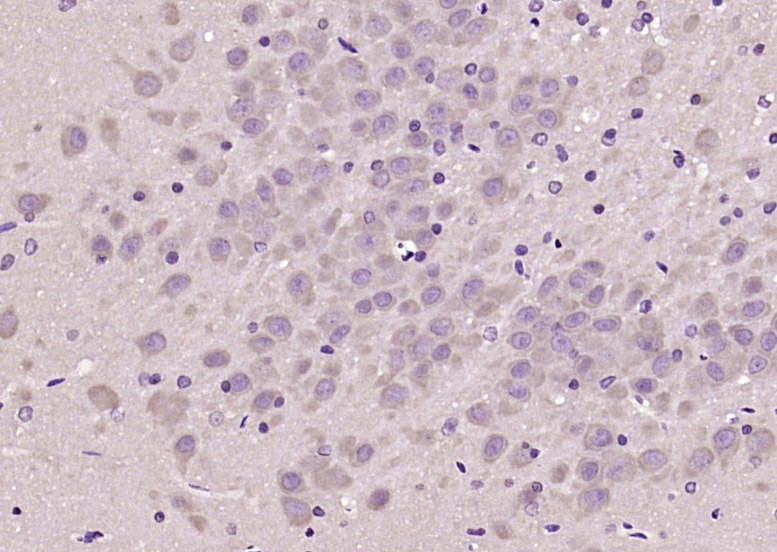
Rabbit Anti-EDG8 antibody
EDG 8; Endothelial differentiation G protein coupled receptor 8; Endothelial differentiation G-protein-coupled receptor 8; Endothelial Differentiation Gene 8; Endothelial differentiation sphingolipid G protein coupled receptor 8; S1P receptor 5; S1P recep
View History [Clear]
Details
Product Name EDG8 Chinese Name endothelial cells分化G protein-coupled receptor8抗体 Alias EDG 8; Endothelial differentiation G protein coupled receptor 8; Endothelial differentiation G-protein-coupled receptor 8; Endothelial Differentiation Gene 8; Endothelial differentiation sphingolipid G protein coupled receptor 8; S1P receptor 5; S1P receptor Edg 8; S1P receptor Edg-8; S1P receptor Edg8; S1P5; S1PR5; S1PR5_HUMAN; Sphingosine 1 Phosphate Receptor 5; Sphingosine 1 phosphate receptor Edg 8; Sphingosine 1 phosphate receptor Edg8; Sphingosine 1-phosphate receptor 5; Sphingosine 1-phosphate receptor Edg-8; SPPR 1; SPPR 2; SPPR1; SPPR2. Research Area Tumour Cardiovascular Cell biology Neurobiology Signal transduction G protein-coupled receptor Epigenetics G protein signal Immunogen Species Rabbit Clonality Polyclonal React Species Rat, (predicted: Human, Mouse, Dog, Pig, ) Applications ELISA=1:5000-10000 IHC-P=1:100-500 IHC-F=1:100-500 ICC=1:100-500 IF=1:100-500 (Paraffin sections need antigen repair)
not yet tested in other applications.
optimal dilutions/concentrations should be determined by the end user.Theoretical molecular weight 42kDa Cellular localization The cell membrane Form Liquid Concentration 1mg/ml immunogen KLH conjugated synthetic peptide derived from human EDG8 : 1-100/398 <Extracellular> Lsotype IgG Purification affinity purified by Protein A Buffer Solution 0.01M TBS(pH7.4) with 1% BSA, 0.03% Proclin300 and 50% Glycerol. Storage Shipped at 4℃. Store at -20 °C for one year. Avoid repeated freeze/thaw cycles. Attention This product as supplied is intended for research use only, not for use in human, therapeutic or diagnostic applications. PubMed PubMed Product Detail The EDG (endothelial differentiation gene) family of G protein coupled receptors consists of eight family members that bind lysophospholipid (LPL) mediators, including sphingosine-1-phosphate (SPP) and lysophosphatidic acid (LPA). EDG-1, EDG-3, EDG-5 (also designated H218 and AGR16) and EDG-8 bind SPP with high affinity. EDG-6 is a low affinity receptor for SPP. LPA preferentially binds to EDG-2, EDG-4 and EDG-7. The EDG receptors couple to multiple G proteins to signal through Ras, MAP kinase, Rho, Phospholipase C or other tyrosine kinases, which lead to cell survival, growth, migration and differentiation. EDG-1 signals through Gi proteins to activate Akt and is expressed in glioma cells. EDG-2 is expressed in brain, especially in white matter tract regions, while EDG-3 is expressed in cardiovascular tissue and in cerebellum. EDG-4 is highly expressed on leukocytes and brain, and EDG-5 has wide tissue distribution, including cardiovascular tissue and brain. EDG-6, which is expressed in lymphoid and hematopoietic tissues and in lung, signals through Gi/o proteins, which activate growth related pathways.
Function:
Receptor for the lysosphingolipid sphingosine 1-phosphate (S1P). S1P is a bioactive lysophospholipid that elicits diverse physiological effect on most types of cells and tissues. Is coupled to both the G(i/0)alpha and G(12) subclass of heteromeric G-proteins (By similarity). May play a regulatory role in the transformation of radial glial cells into astrocytes and may affect proliferative activity of these cells.
Subcellular Location:
Cell membrane; Multi-pass membrane protein
Tissue Specificity:
Widely expressed in the brain, most prominently in the corpus callosum, which is predominantly white matter. Detected in spleen, peripheral blood leukocytes, placenta, lung, aorta and fetal spleen. Low-level signal detected in many tissue extracts. Overexpressed in leukemic large granular lymphocytes. Isoform 1 is predominantly expressed in peripheral tissues. Isoform 2 is expressed in brain, spleen and peripheral blood leukocytes.
Similarity:
Belongs to the G-protein coupled receptor 1 family.
SWISS:
Q9H228
Gene ID:
53637
Database links:
Entrez Gene: 53637 HumanEntrez Gene: 94226 Mouse
Omim: 605146 Human
SwissProt: Q9H228 Human
SwissProt: Q91X56 Mouse
Unigene: 501561 Human
Unigene: 190619 Mouse
Unigene: 45601 Rat
Product Picture
References (0)
No References
Bought notes(bought amounts latest0)
No one bought this product
User Comment(Total0User Comment Num)
- No comment



 +86 571 56623320
+86 571 56623320
 +86 18668110335
+86 18668110335

